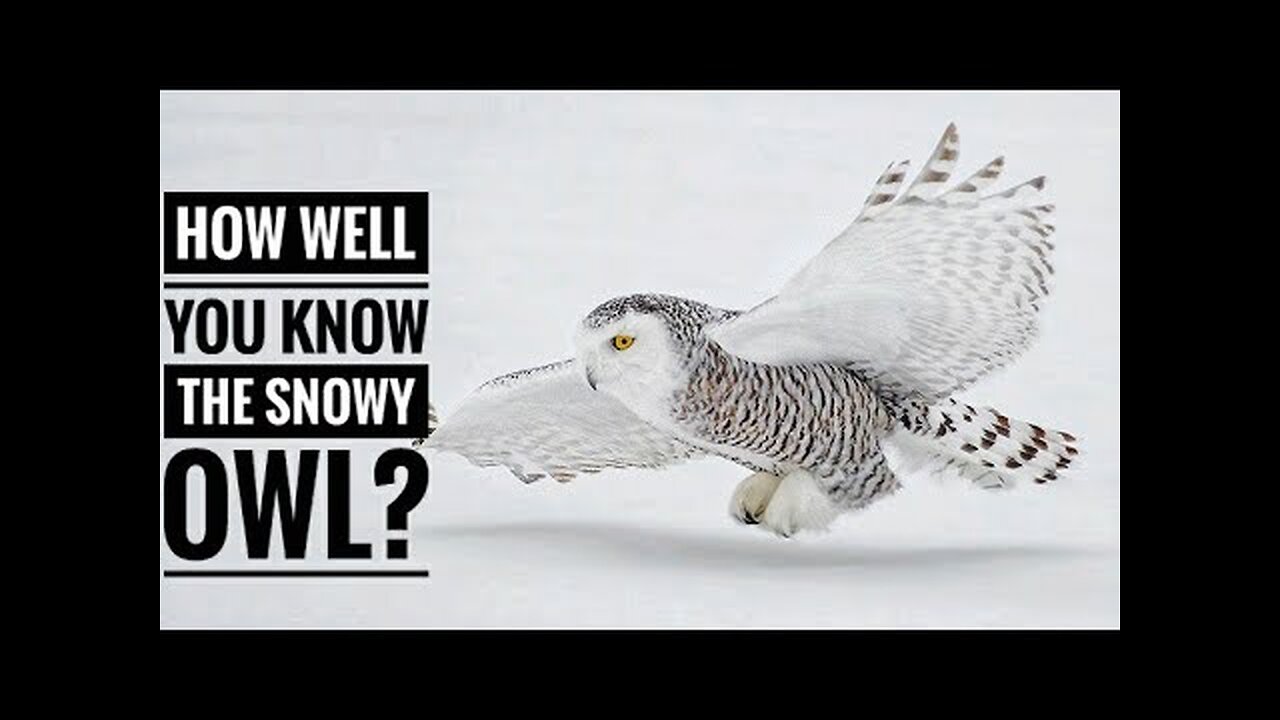Premium Only Content

Snowy Owl || Description, Characteristics and Facts!
The snowy owl, scientifically known as Bubo scandiacus, is an iconic and captivating species belonging to the true owl family. Recognizable by its large size and stunningly white plumage, it's also referred to as the polar owl, white owl, or Arctic owl. Native to the Arctic regions across North America and the Palearctic, these owls predominantly breed in the expansive tundra landscapes.
Distinct from many other owl species, snowy owls boast unique adaptations tailored to their habitat and lifestyle. They're among the largest owls globally and stand out as the only owl predominantly covered in white feathers. Males typically exhibit purer white coloring, while females often display more extensive dark brown flecks. Juvenile males resemble females until reaching maturity, after which they tend to adopt a whiter appearance. Identifying the composition of brown markings around the wings serves as a reliable technique to determine the age and sex of individual snowy owls.
Contrary to most owls that are nocturnal, snowy owls exhibit activity during the day, particularly in the summer months. Their hunting behavior is both specialized and adaptable. While heavily reliant on tundra-dwelling lemmings for breeding, they exhibit versatility in prey selection during non-breeding seasons, targeting various small mammals, northern water birds, and occasionally scavenging carrion. Nesting typically occurs on elevated ground within the tundra, with snowy owls laying notably large clutches of eggs ranging from 5 to 11. The hatching and development of their young span a relatively extended period, with the young seeking independence in the autumn despite the brevity of the Arctic summer.
These remarkable birds are nomadic in nature, seldom breeding in the same locations or with the same mates, and sometimes forgoing breeding altogether if prey availability is limited. Their migratory behavior leads them across Arctic regions, occasionally unpredictably surging southward in substantial numbers. Historically, understanding their status was challenging due to the difficulty in surveying these unpredictable creatures. Recent data, however, indicates a sharp decline in their population. Once estimated at over 200,000 individuals globally, recent figures suggest a dwindling number, possibly fewer than 100,000, with successful breeding pairs estimated at around 28,000 or possibly even less.
The exact causes of this decline remain poorly understood, but there's a strong correlation between the fragile existence of snowy owls and numerous complex environmental factors, often associated with the effects of global warming. Protecting these magnificent creatures and preserving their fragile habitats is crucial for their survival and the health of the Arctic ecosystems they inhabit.
Tags: #SnowyOwl #ArcticOwl #WildlifeConservation #AvianEcology #ArcticEcosystems #GlobalWarming #EndangeredSpecies #NomadicBirds #MigratorySpecies
-
 1:48:36
1:48:36
Right Side Broadcasting Network
15 hours agoLIVE: President Trump Attends the Yankees Baseball Game - 9/11/25
168K24 -
 1:54:32
1:54:32
Badlands Media
9 hours agoBadlands Media Special Coverage - FBI Press Conference on Charlie Kirk's Assassination
139K20 -
 1:06:19
1:06:19
BonginoReport
10 hours agoManhunt Underway for Charlie Kirk’s Assassin - Nightly Scroll w/ Hayley Caronia (Ep.132)
302K232 -
 1:11:42
1:11:42
Flyover Conservatives
18 hours agoStructural Architect Destroys 9.11 Narrative... What Really Happened? - Richard Gage AIA | FOC Show
92.6K16 -
 1:51:14
1:51:14
Precision Rifle Network
14 hours agoS5E1 Guns & Grub - Charlie Kirk's "sniper"
53K16 -
 13:09:12
13:09:12
LFA TV
21 hours agoLFA TV ALL DAY STREAM - THURSDAY 9/11/25
414K93 -
 1:01:56
1:01:56
The Nick DiPaolo Show Channel
11 hours agoDems + Media Killed Kirk | The Nick Di Paolo Show #1792
128K121 -
 1:35:10
1:35:10
LIVE WITH CHRIS'WORLD
12 hours agoLIVE WITH CHRIS’WORLD - WE ARE CHARLIE KIRK! Remembering a Legend
39.8K7 -
 50:24
50:24
Donald Trump Jr.
12 hours agoFor Charlie
402K494 -
 2:05:22
2:05:22
Quite Frankly
13 hours agoTipping Point USA? & Open Lines | 9/11/25
80K8